18+ Stage monitor placement info
Home » money laundering Info » 18+ Stage monitor placement infoYour Stage monitor placement images are available. Stage monitor placement are a topic that is being searched for and liked by netizens now. You can Download the Stage monitor placement files here. Get all free images.
If you’re looking for stage monitor placement pictures information related to the stage monitor placement keyword, you have pay a visit to the ideal site. Our site always provides you with suggestions for downloading the maximum quality video and image content, please kindly hunt and locate more enlightening video articles and images that match your interests.
Stage Monitor Placement. Stand at the microphone position on stage and speak into it. Under Custom Position change the Left position to the number you got from step 5. Add the Left Position and Width together to get the Left position for foldback for step 8. To daisy chain monitors locate the Input and Thru connectors.
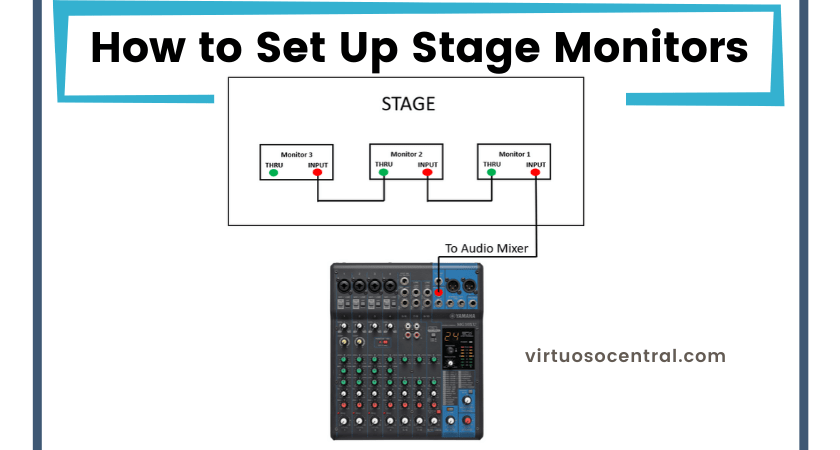 How To Set Up Stage Monitors Virtuoso Central From virtuosocentral.com
How To Set Up Stage Monitors Virtuoso Central From virtuosocentral.com
Under Custom Position change the Left position to the number you got from step 5. You can use Slide Cues to change your stage display layouts and clocks on the stage display. The best place for the monitor console is at the side of the stage. Also ensure the speaker isnt exactly midway between floor and ceiling for the same reason. This is also true for MTM monitors like the Eris E44 and E66 when placed vertically. The monitor engineer might have a personal preference it might be better to be closer to certain musicians or there might be technical facilities or people on one side of the stage that you need to be close to.
Method 2 Speaker Placement Stage Monitors.
Click on Foldback on the left. Under Live Options click the Output Monitor dropdown then select the monitor you wish to use for the Front of House display. If you use one monitor more often about 8020. Some monitors like the PreSonus Eris E5 E44 and E66 can be placed horizontally or vertically. On the other hand those that use one monitor considerably more than the other should place greater emphasis on the one most used. Ive heard people suggest moving the monitor away from the performer for better gain before feedback but dont do that.
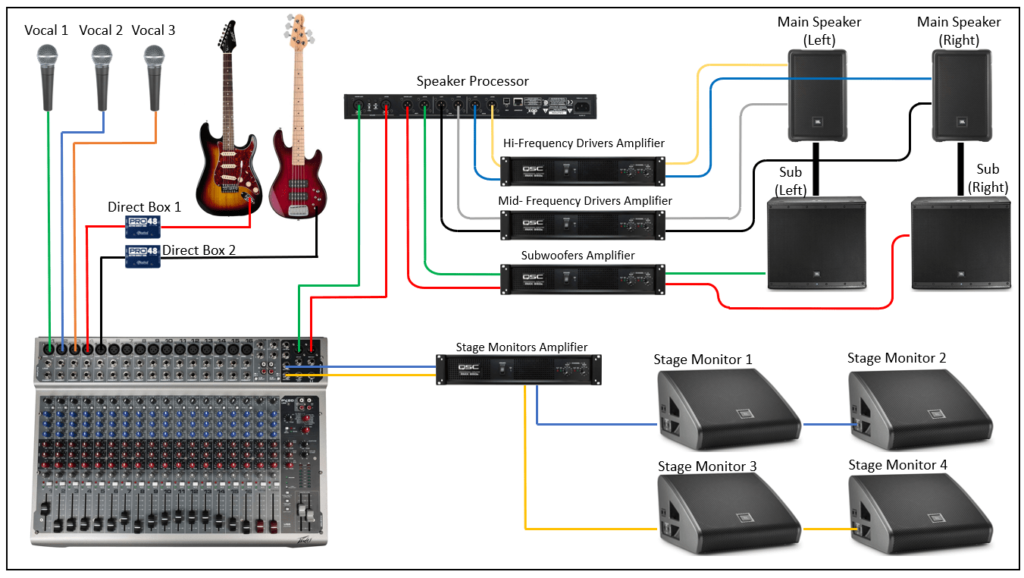 Source: virtuosocentral.com
Source: virtuosocentral.com
Position monitors against the longest wall. You can use Slide Cues to change your stage display layouts and clocks on the stage display. Get your monitors at ear level Position the tweeters of your speakers at head height ear level so that your ears are directly in front of the speakers. Place both monitors as close as possible in front of you. On the other hand those that use one monitor considerably more than the other should place greater emphasis on the one most used.
 Source: virtuosocentral.com
Source: virtuosocentral.com
Place the monitor you use most directly in front of you as if it was a single monitor. You can use Slide Cues to change your stage display layouts and clocks on the stage display. Stand at the microphone position on stage and speak into it. Remember your math lessons the equilateral triangles are equi-angular ie the three angles are equal they are 60. Its better to move it below or above the midway point than to have the tweeter exactly at head height and you can always angle the cabinets slightly to aim the tweeters at the monitoring position if you need to.
 Source: soundonsound.com
Source: soundonsound.com
After surveying the stage and deciding where to place the monitors connect them in daisy chain form so that the same signal coming from the audio mixer is fed to each one. Some monitors like the PreSonus Eris E5 E44 and E66 can be placed horizontally or vertically. Also ensure the speaker isnt exactly midway between floor and ceiling for the same reason. To set up the stage monitors follow these steps. This is also true for MTM monitors like the Eris E44 and E66 when placed vertically.
 Source: soundonsound.com
Source: soundonsound.com
Positioning your computer monitor correctly is an important part of the ergonomic design for your computer workstation. Get your monitors at ear level Position the tweeters of your speakers at head height ear level so that your ears are directly in front of the speakers. Another common problem created by a poorly placed monitor is eyestrain which is also uncomfortable and can lead to. Which side is up to you. To set up the stage monitors follow these steps.
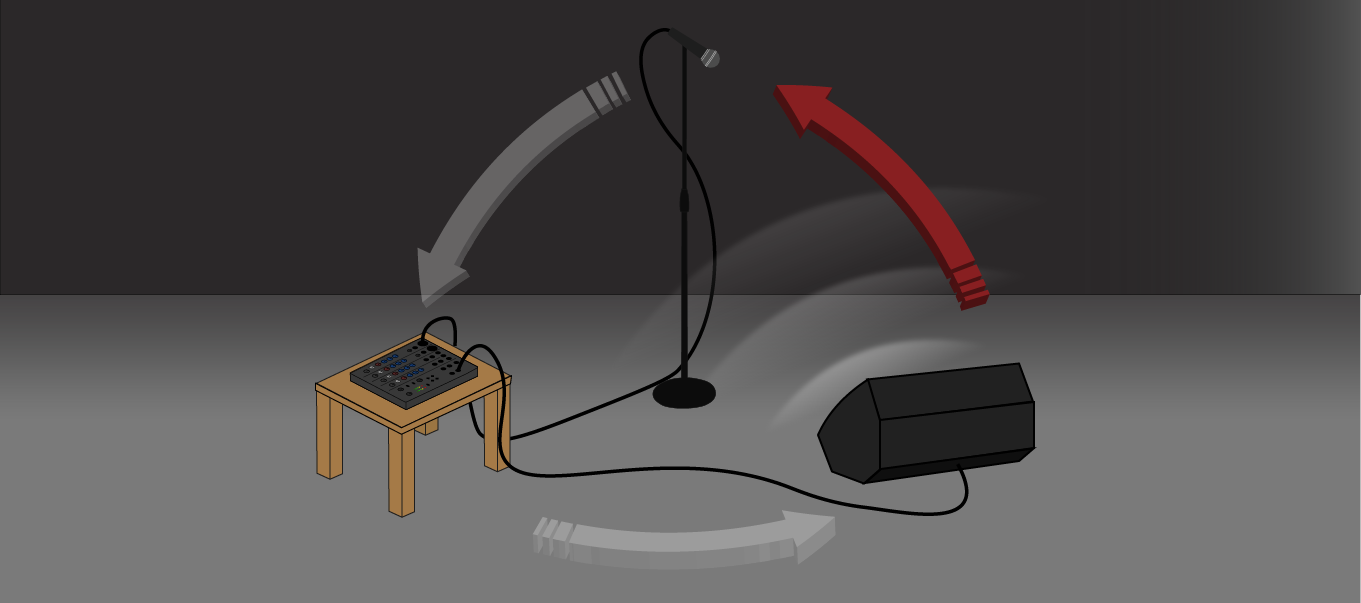 Source: sweetwater.com
Source: sweetwater.com
The first is with the Add Cue menu. On the other hand those that use one monitor considerably more than the other should place greater emphasis on the one most used. Stand at the microphone position on stage and speak into it. When orienting your studio monitors horizontally they should form a mirror image of each other with the tweeters on the outside. A poorly positioned monitor could introduce awkward and uncomfortable postures which can eventually lead to a painful musculoskeletal disorder MSD.
 Source: sounddesignlive.com
Source: sounddesignlive.com
The inner edges should touch and be directly in front of you. That is they should form a mirror image of each other with the tweeters on the outside. Right-click on the slide you want to add a cue to then go to Add Cue and either Stage Display Layout or Countdown Timer to add the options to make changes. The first is with the Add Cue menu. Click Foldback on the left Check the box to Enable support for display Foldback stage display Under Select Output Monitor select the monitor you wish to use for Display Foldback.
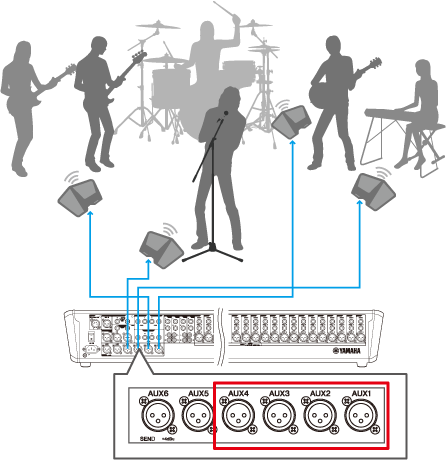 Source: asia-latinamerica-mea.yamaha.com
Source: asia-latinamerica-mea.yamaha.com
Check the box to Enable support for display Foldback stage display. On the other hand those that use one monitor considerably more than the other should place greater emphasis on the one most used. Floor wedges should be placed on-axis and as close to the performers head as possible. Under Custom Position change the Left position to the number you got from step 5. The ideal location for a stage monitor is somewhere in front of the performers and pointed away from as many mics as possible to eliminate the chance of getting feedback.
 Source: researchgate.net
Source: researchgate.net
When it comes to the width of your room you really cant vary the distances from the side-walls because you still need to maintain a symmetrical stereo image. The inner edges should touch and be directly in front of you. The monitor engineer might have a personal preference it might be better to be closer to certain musicians or there might be technical facilities or people on one side of the stage that you need to be close to. Place the monitors at an angle creating a semi-circle. Ive heard people suggest moving the monitor away from the performer for better gain before feedback but dont do that.
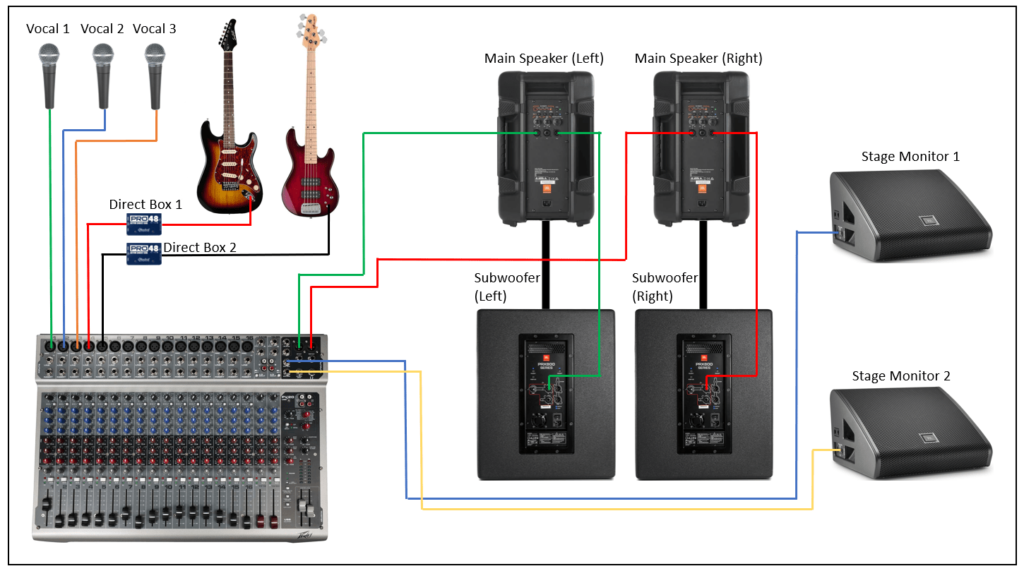 Source: virtuosocentral.com
Source: virtuosocentral.com
A stage monitor system is a set of performer-facing loudspeakers called monitor speakers stage monitors floor monitors wedges or foldbacks on stage during live music performances in which a sound reinforcement system is used to amplify a performance for the audience. This is also true for MTM monitors like the Eris E44 and E66 when placed vertically. Under Live Options click the Output Monitor dropdown then select the monitor you wish to use for the Front of House display. Positioning Of Monitor Console. The solution is to either fire up the mains at the beginning of rehearsal not always possible or roll off the bass in the stage monitors once the mains are engaged.
 Source: soundonsound.com
Source: soundonsound.com
While you are doing this have the person who is running the mixing board slowly and I mean slowly raise the level of your voice in that monitor and only that monitor. Under Live Options click the Output Monitor dropdown then select the monitor you wish to use for the Front of House display. While you are doing this have the person who is running the mixing board slowly and I mean slowly raise the level of your voice in that monitor and only that monitor. The first is with the Add Cue menu. When it comes to the width of your room you really cant vary the distances from the side-walls because you still need to maintain a symmetrical stereo image.
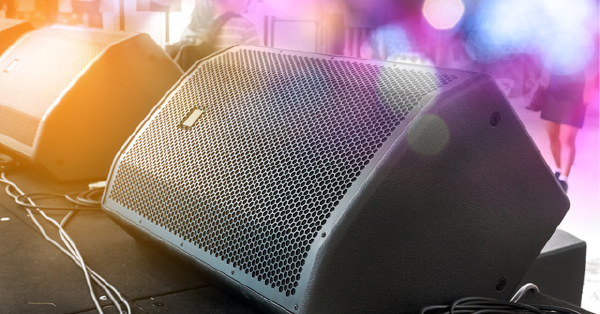 Source: sweetwater.com
Source: sweetwater.com
The ideal location for a stage monitor is somewhere in front of the performers and pointed away from as many mics as possible to eliminate the chance of getting feedback. Under Custom Position change the Left position to the number you got from step 5. The ideal location for a stage monitor is somewhere in front of the performers and pointed away from as many mics as possible to eliminate the chance of getting feedback. Add the Left Position and Width together to get the Left position for foldback for step 8. The monitor engineer might have a personal preference it might be better to be closer to certain musicians or there might be technical facilities or people on one side of the stage that you need to be close to.
 Source: pinterest.com
Source: pinterest.com
To set up the stage monitors follow these steps. When orienting your studio monitors horizontally they should form a mirror image of each other with the tweeters on the outside. Position your monitors along the short wall A is better than B 3. This is also true for MTM monitors like the Eris E44 and E66 when placed vertically. There are two ways to assign these cues.
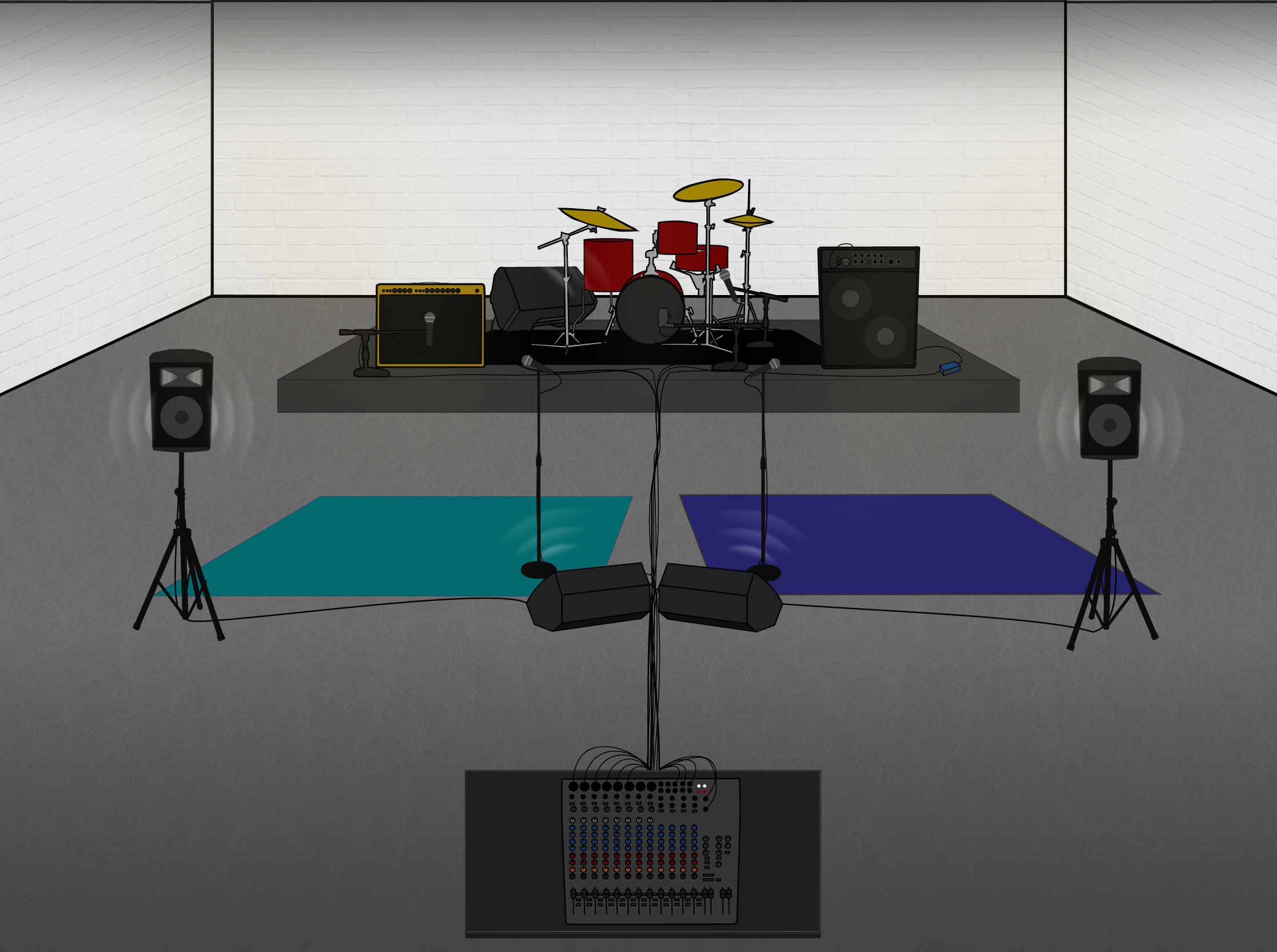 Source: sweetwater.com
Source: sweetwater.com
Get your monitors at ear level Position the tweeters of your speakers at head height ear level so that your ears are directly in front of the speakers. Floor wedges should be placed on-axis and as close to the performers head as possible. Position your monitors along the short wall A is better than B 3. Its better to move it below or above the midway point than to have the tweeter exactly at head height and you can always angle the cabinets slightly to aim the tweeters at the monitoring position if you need to. Place the monitor you use most directly in front of you as if it was a single monitor.
This site is an open community for users to do sharing their favorite wallpapers on the internet, all images or pictures in this website are for personal wallpaper use only, it is stricly prohibited to use this wallpaper for commercial purposes, if you are the author and find this image is shared without your permission, please kindly raise a DMCA report to Us.
If you find this site good, please support us by sharing this posts to your own social media accounts like Facebook, Instagram and so on or you can also save this blog page with the title stage monitor placement by using Ctrl + D for devices a laptop with a Windows operating system or Command + D for laptops with an Apple operating system. If you use a smartphone, you can also use the drawer menu of the browser you are using. Whether it’s a Windows, Mac, iOS or Android operating system, you will still be able to bookmark this website.